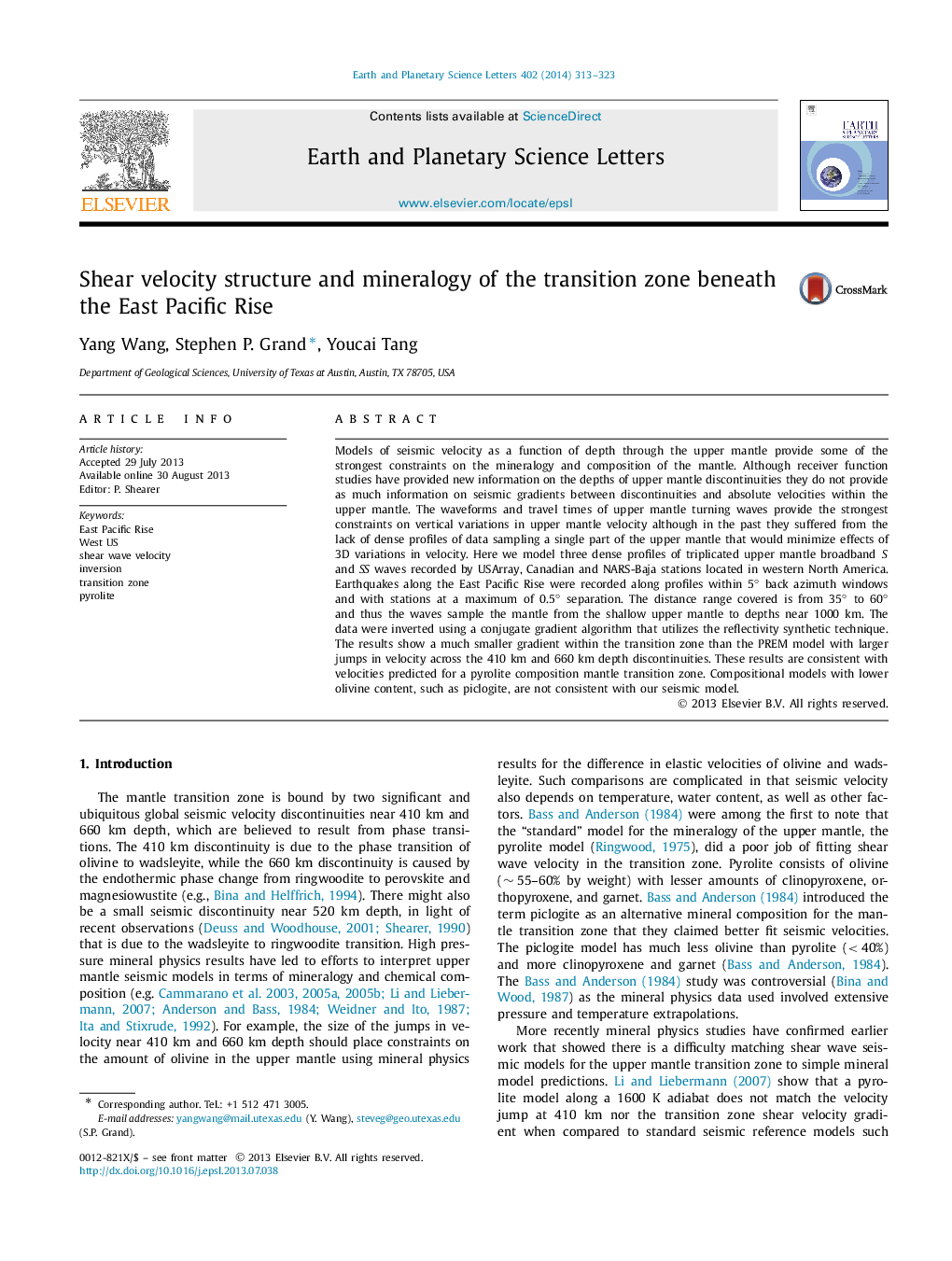| Article ID | Journal | Published Year | Pages | File Type |
|---|---|---|---|---|
| 4677019 | Earth and Planetary Science Letters | 2014 | 11 Pages |
•We model S and SS triplicated waveforms for mantle transition zone structure.•The waveforms were inverted using a conjugate gradient algorithm.•Large jumps in velocity across the 410 and 660 km discontinuities are found.•The results are consistent with a pyrolite composition for the transition zone.
Models of seismic velocity as a function of depth through the upper mantle provide some of the strongest constraints on the mineralogy and composition of the mantle. Although receiver function studies have provided new information on the depths of upper mantle discontinuities they do not provide as much information on seismic gradients between discontinuities and absolute velocities within the upper mantle. The waveforms and travel times of upper mantle turning waves provide the strongest constraints on vertical variations in upper mantle velocity although in the past they suffered from the lack of dense profiles of data sampling a single part of the upper mantle that would minimize effects of 3D variations in velocity. Here we model three dense profiles of triplicated upper mantle broadband S and SS waves recorded by USArray, Canadian and NARS-Baja stations located in western North America. Earthquakes along the East Pacific Rise were recorded along profiles within 5° back azimuth windows and with stations at a maximum of 0.5° separation. The distance range covered is from 35° to 60° and thus the waves sample the mantle from the shallow upper mantle to depths near 1000 km. The data were inverted using a conjugate gradient algorithm that utilizes the reflectivity synthetic technique. The results show a much smaller gradient within the transition zone than the PREM model with larger jumps in velocity across the 410 km and 660 km depth discontinuities. These results are consistent with velocities predicted for a pyrolite composition mantle transition zone. Compositional models with lower olivine content, such as piclogite, are not consistent with our seismic model.
